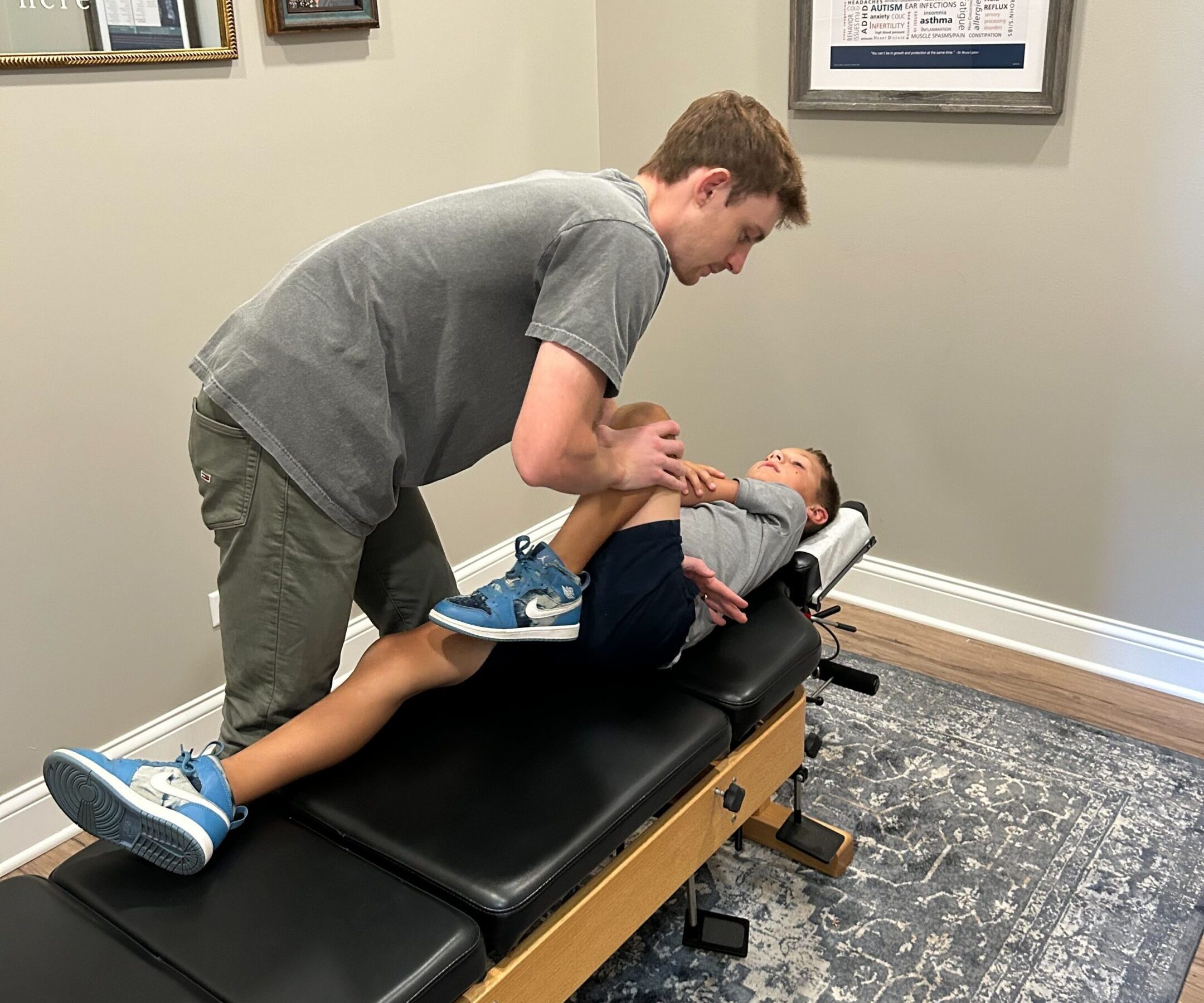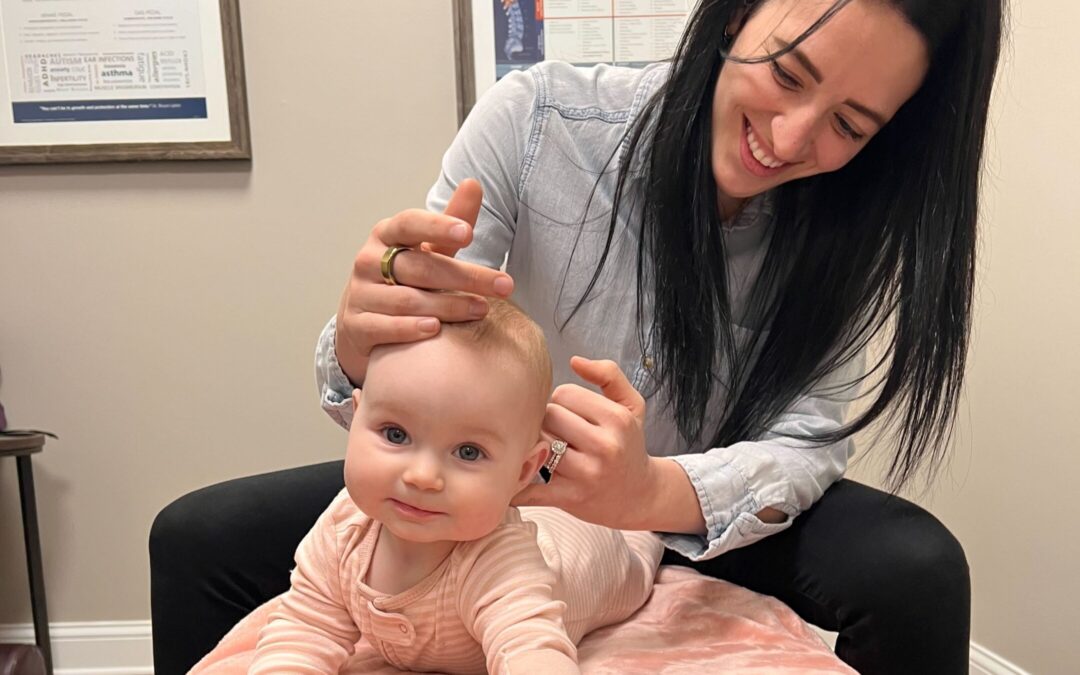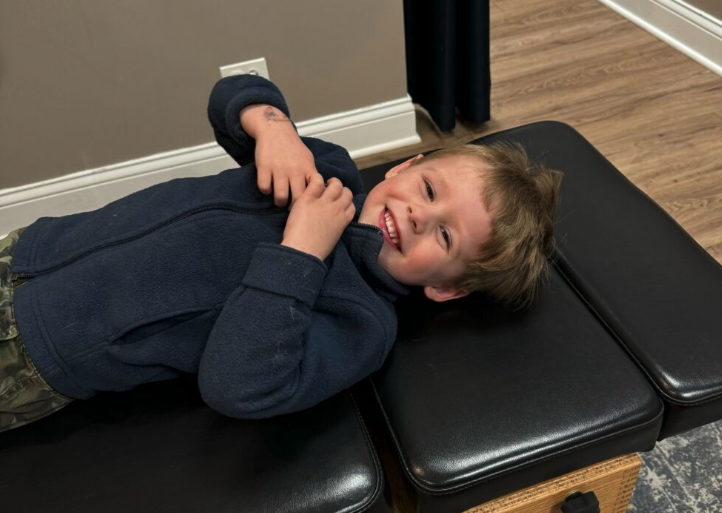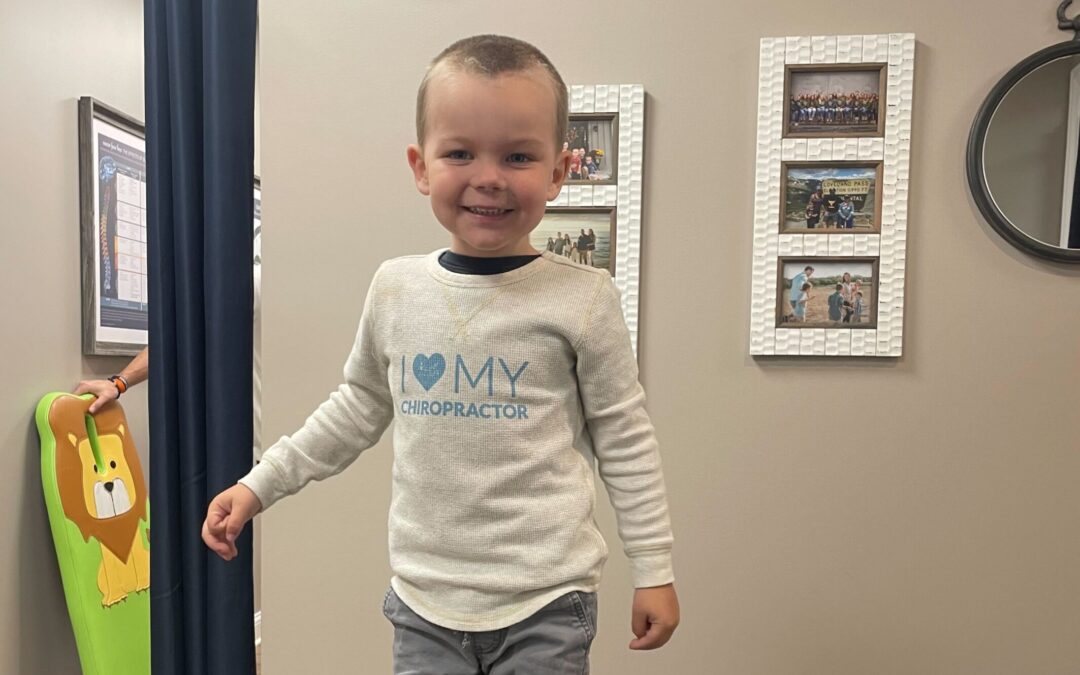In the journey of childhood, where every day brings new discoveries and accomplishments, there’s a less talked about aspect that can accompany this transformative period: growing pains. These pains, often dismissed as a rite of passage, can significantly impact a child’s daily life and activities. Many parents spend countless nights consoling their children as throbbing discomfort takes over.
I know for my own children, the signs and symptoms of their growing pains aren’t just physical but emotional and behavioral as well. Their sleep is disrupted, and their little bodies have extra stress to deal with, throwing other things like emotions and even immune function a bit haywire while their body works through the physical components of that growth spurt.
In this article, we delve into the realm of growing pains, shedding light on their root causes and how Neurologically-Focused Chiropractic care can be used as effective management, easing discomfort and guiding your child through a smoother journey as they grow.
What are Growing Pains?
Growing pains, a term coined for the aches and discomfort experienced during childhood growth, are a common occurrence affecting many children. However, these pains often remain misunderstood or misdiagnosed due to their elusive nature.
Frequently characterized as aching or throbbing sensations, growing pains typically manifest in the legs, often concentrated in the anterior region of the thighs, the calves, or the area behind the knees. These discomforts usually impact both legs and tend to manifest in the afternoons or evenings.
Although these aches bear the name “growing pains,” there is no substantiated evidence suggesting simple growth is responsible for the pain. Within the traditional medical field, there exists no specific remedy tailored to addressing growing pains. It is important, however, to distinguish them from other medical conditions.
Age Range and Onset of Growing Pains
Growing pains usually start in children between the ages of 3 and 12 years; naturally, the onset for each child can vary. The duration can range from minutes to hours, leaving both parents and children perplexed about their origin.
Signs and Symptoms of Growing Pains
Growing pains vary from child to child. Some children experience significant discomfort, while others do not. It’s common that most children will not experience pain on a daily basis.
The occurrence of growing pains is intermittent. They can manifest over the course of several months or even years.
As previously mentioned, these pains typically emerge during the late afternoon, evening, just before dinner, and at bedtime. The intensity of leg pains could definitely cause disturbances during sleep, leading your child to wake up. This, in turn, leads to daytime tiredness (fatigue).
If your child appears perfectly fine and out of pain in the morning, it’s important not to immediately dismiss their previous discomfort. Growing pains tend to alleviate by morning. They generally don’t hinder a child’s engagement in sports or other physical activities.
Typically, growing pains manifest in both legs, often concentrated in the front of the thighs, the back of the legs (calves), or behind the knees. Sometimes, children who encounter growing pains are more prone to experiencing headaches and abdominal discomfort as well.
Sensory Challenges and Growing Pains
Children who struggle with Sensory Processing Disorder, Autism Spectrum Disorder, Anxiety, and other neurological challenges tend to be the most sensitive to growth spurts and growing pains. As simple as it sounds, this is often responsible for why sensory and spectrum kids have “bad days” that are not related to other common stressors like poor sleep, toxins, and so forth.
Factors That Influence Growing Pains
Like nearly every other condition or childhood health challenge, as PX Docs, we like to dive way deeper than the average pediatrician may and not simply dismiss growing pains as “normal” or “no big deal” because so often they can significantly limit a child’s quality of life when they hit a growth spurt.
Growth Spurts and Bone Development
As the bones of the body grow and get longer, this places added stress and tension on the muscles, ligaments, and sensory nerves that are all intricately connected. These periods of intensified bone development and overall growth can lead to temporary musculoskeletal imbalances, possibly causing the discomfort that children often describe as growing pains.
If the tension and imbalance build up enough, it can lead to a condition called subluxation, where the neuromuscular system is overstressed and imbalanced. The challenge with subluxation is that instead of being transient (coming and going), it can get locked in and become a long-standing problem for the child until assessed and adjusted by a trained Pediatric Chiropractor.
Muscle Fatigue and Overuse
Engaging in physical activities is an essential part of childhood, but the traditional medical field believes it can also lead to muscle fatigue and overuse, potentially exacerbating growing pains. Growing pains seem to be more common on days after a child has a particularly full day of sports or physical activity.
But what causes certain children to experience growing pains while others remain unaffected? This is where we dig deeper into the actual root cause.
Subluxation, Dysautonomia, and Growing Pains
As mentioned above, there is something more at play that is causing stress and tension in your child’s body, and it begins with the central nervous system. Your child’s central nervous system is the “hub” and “air traffic controller” for every other major system in the body. So, when your child is dealing with an overstressed and imbalanced nervous system, a whole plethora of challenges can result from that. This fact also helps to explain why kids with growing pains tend to experience other ailments like headaches, abdominal pain, and mood swings as well.
Subluxation can begin to build up in your child starting at the very beginning of their lives due to birth trauma such as C-sections, vacuum extractions, and forceps deliveries. Oftentimes, this early trauma triggers the development of a chronic neurological condition called dysautonomia, which is an overstressed and out of balance nervous system.
Breaking down subluxation a bit further, it really has 3 main components that very much factor into growing pains and related neuromusculoskeletal challenges.
Subluxations 3 main components are:
- Misalignment
- Fixation & Tension
- Neurological Interference & Imbalance
When subluxation is present, that means a child has an overly stressed and excessively stimulated sympathetic “fight or flight” nervous system. This is the same thing as saying the calming, relaxing parasympathetic “rest and digest” side of the nervous system is underactive and not working at its full capacity. Putting this all together over time leads to dysautonomia.
When your child is in that stimulated sympathetic mode, neuromuscular tension, inflammation, and misalignment are all at play. So when they are running around and further exacerbating that misalignment and tension in their muscles, their central nervous system can not calm and release the tension properly, which can lead to what is called growing pains.
Managing and Alleviating Growing Pains With Chiropractic Care
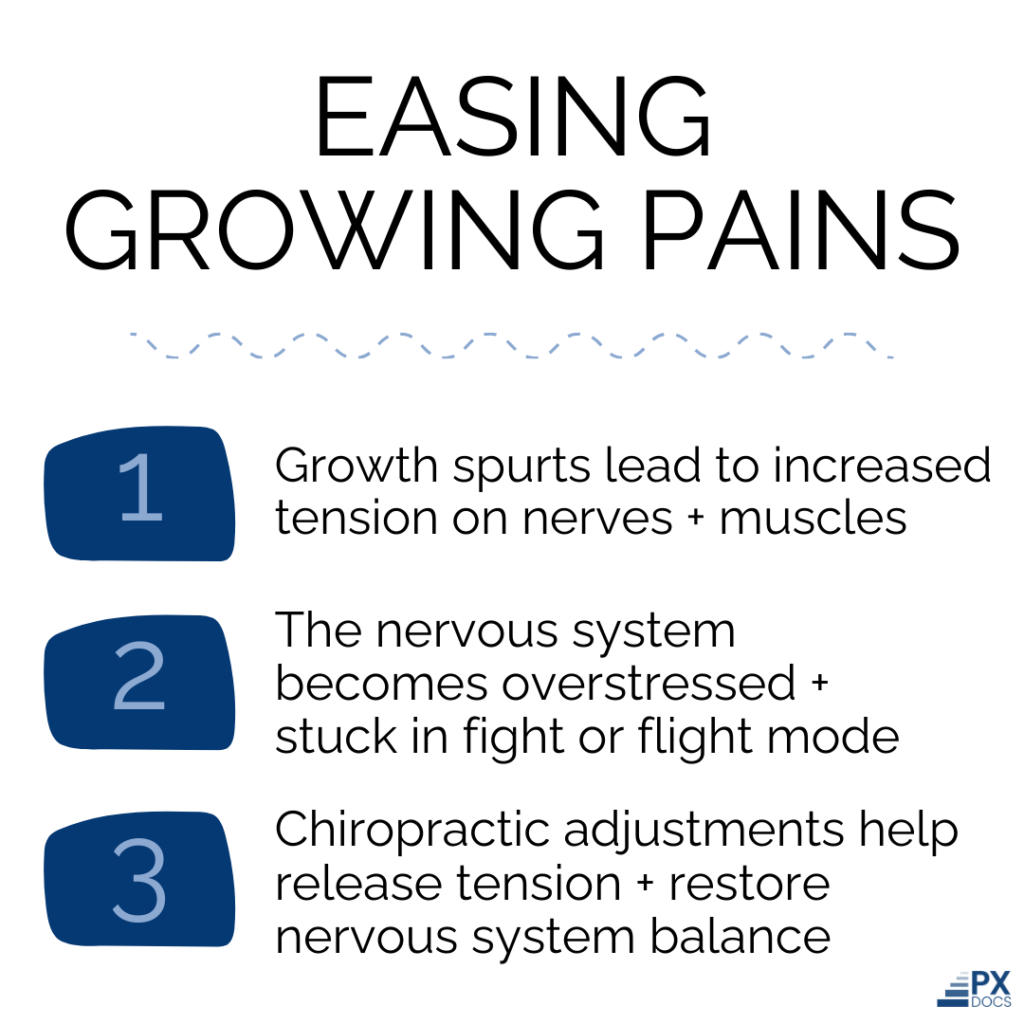
Neurologically-Focused Chiropractic Care offers an entirely unique approach to supporting children who are experiencing growing pains. Most pediatricians will tell you your child will “grow out of it” and to just wait and watch. We address the root cause head-on immediately – to help your child now with their hypersensitivity to physical activity.
Since growing pains are primarily rooted in a stuck, overly stressed sympathetic nervous system, total recovery must start with a full and complete neurological focus. Our PX Doctors have the ability to target subluxation and dysautonomia responsible for the stress and imbalance within the nervous system.
Our clinical approach begins with an in-depth case history and consultation with your PX Doc, who will dive deep with you into any known triggers of your child’s growing pains. From there, we utilize an incredible piece of technology called INSiGHT Scans that aid in identifying and detecting the presence of subluxation and dysautonomia, allowing us to quantify the severity and pinpoint specific areas that require attention and adjustments.
Then, through gentle Neuro-Tonal Adjustments, our PX Doctors can address the subluxations that are keeping the nervous system stressed and out of balance in the first place. Once the function of the nervous system is restored, you will start to see positive changes. These adjustments will result in healthy neuromuscular function and range of motion, promoting overall comfort during growth.
Not only will your child feel more comfortable physically, but there are so many other benefits from chiropractic care, including better sleep. Chiropractic care will allow them to sleep better without worrying about being awakened from growing pains.
So, if you are tired of waiting for your child to outgrow growing pains, check out our directory today to find a PX Doc near you. Growing pains, often underestimated, can significantly impact a child’s physical discomfort and daily activities. By acknowledging the significance of growing pains, parents and caregivers can ensure that children navigate this transformative phase with resilience and optimal well-being.

